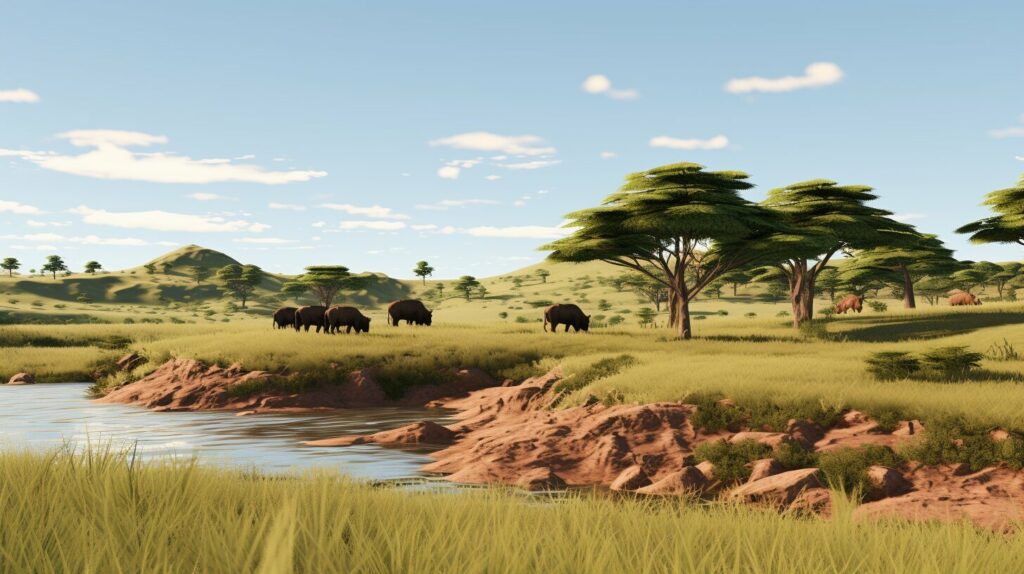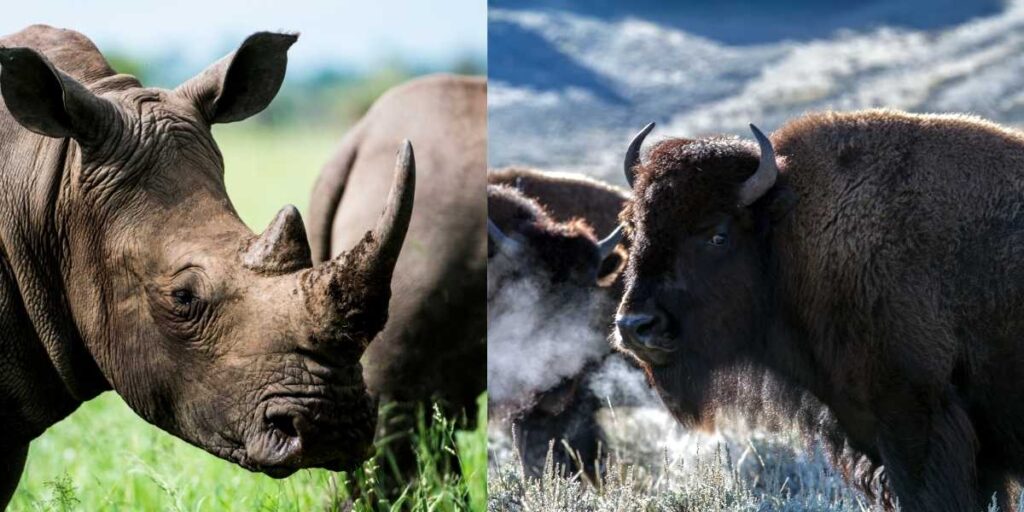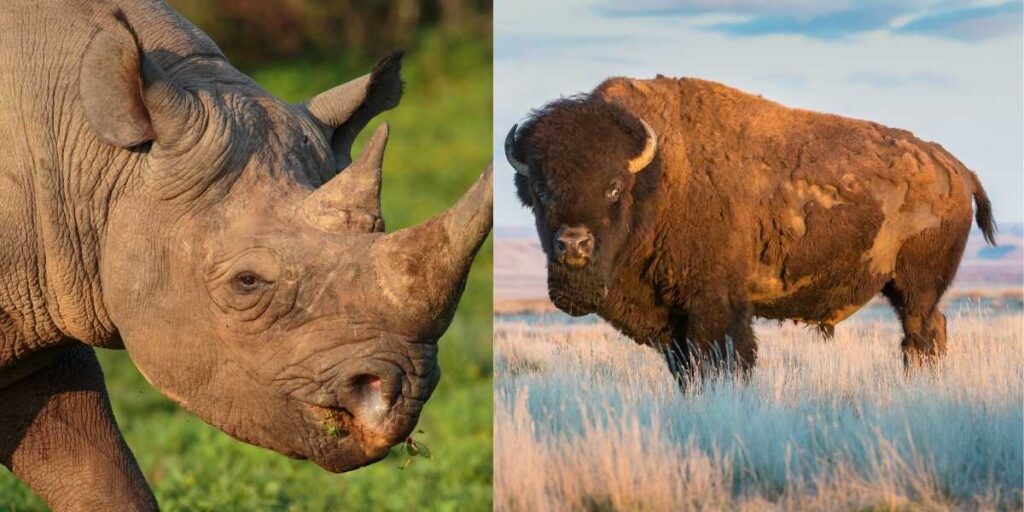Bison vs Rhino: Habitat and Distribution
Geographic Range of Bison
- American Bison: Historically, the American bison roamed the vast grasslands of North America in massive herds. Today, they are primarily found in protected areas, such as national parks and reserves, with populations in the United States and Canada.
- European Bison: The European bison, also known as the wisent, once faced near extinction. Conservation efforts have seen a resurgence, and they are now found in various European countries, including Poland, Belarus, and Russia.
Geographic Range of Rhinos
- White Rhinos: White rhinos are primarily found in grasslands and savannas of southern Africa, with notable populations in countries like South Africa, Namibia, Zimbabwe, and Kenya.
- Black Rhinos: Black rhinos inhabit a range of ecosystems, including savannas, grasslands, and dense forests. Their distribution spans southern and eastern Africa, with populations in countries like Namibia, Zimbabwe, Tanzania, and Kenya.
Rhino vs Bison: Behavior and Social Structure
Bison Behavior
- Herd Structure and Social Dynamics: Bison are known for their social nature, forming large herds that provide protection against predators. Herds are typically led by a dominant female, and social bonds within the group are essential for survival.
- Communication within Bison Herds: Communication in bison herds involves vocalizations, such as grunts and bellows, to convey various messages. Additionally, body language, including head movements and gestures, plays a crucial role in maintaining order within the herd.
Rhino Behavior
- Solitary Nature and Territorial Behavior: Rhinos, particularly the black rhino, are more solitary in nature. They establish territories and can be territorial about resources, especially during mating seasons. White rhinos, however, may form loose groupings.
- Communication Methods among Rhinos: Rhinos communicate through various means, including vocalizations such as grunts, snorts, and honks. Territorial rhinos may use scent marking, leaving dung piles, or scraping their feet to establish boundaries.
Stay tuned as we delve deeper into the dietary habits of bison and rhinos, exploring how their feeding behaviors contribute to their survival in diverse ecosystems.

Diet and Feeding Habits: Bison vs. Rhino
Bison Diet
- Herbivorous Grazing Habits: Bison are strict herbivores, primarily grazing on grasses. Their large, sturdy tongues and well-adapted teeth allow them to efficiently consume tough vegetation, contributing to the shaping of grassland ecosystems.
- Seasonal Variations in Bison Diet: The diet of bison experiences seasonal variations. During the warmer months, they graze on a variety of grasses. In winter, when vegetation is scarce, bison may resort to digging through snow to access buried grass or relying on stored fat reserves.
Rhino Diet
- Herbivores with a Preference for Specific Vegetation: Rhinos are herbivores with a preference for different types of vegetation. White rhinos are primarily grazers, feeding on grasses, while black rhinos are browsers, consuming a variety of shrubs, leaves, and branches.
- Unique Feeding Adaptations of Rhinos: Rhinos have specialized upper lips adapted for grasping and manipulating vegetation. Their horns, while primarily used for defense, may also assist in breaking branches and accessing food. Their ability to consume a range of plant materials reflects their adaptability to diverse habitats.
Adaptations and Survival Strategies
Bison Adaptations for Different Climates
- Thick Fur Coats: Bison exhibit adaptations to withstand different climates, including a thick fur coat that provides insulation during cold winters.
- Migratory Behavior: Some bison populations exhibit migratory behavior, moving to different areas in response to changing seasons and resource availability.
Rhino Adaptations for Defense and Survival
- Thick Skin and Horns: Rhino survival strategies include the development of thick, protective skin that acts as armor against predators. The presence of a horn further enhances their ability to deter potential threats.
- Territorial Behavior: Rhinos exhibit territorial behavior, marking and defending specific areas. This territoriality aids in resource protection and mating opportunities.
As we move forward, we’ll explore the conservation status and threats faced by both bison and rhinos, shedding light on the challenges these magnificent creatures encounter in the modern world.





